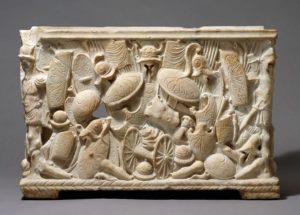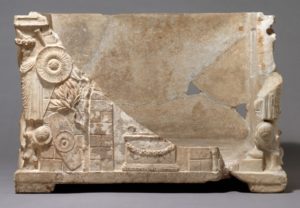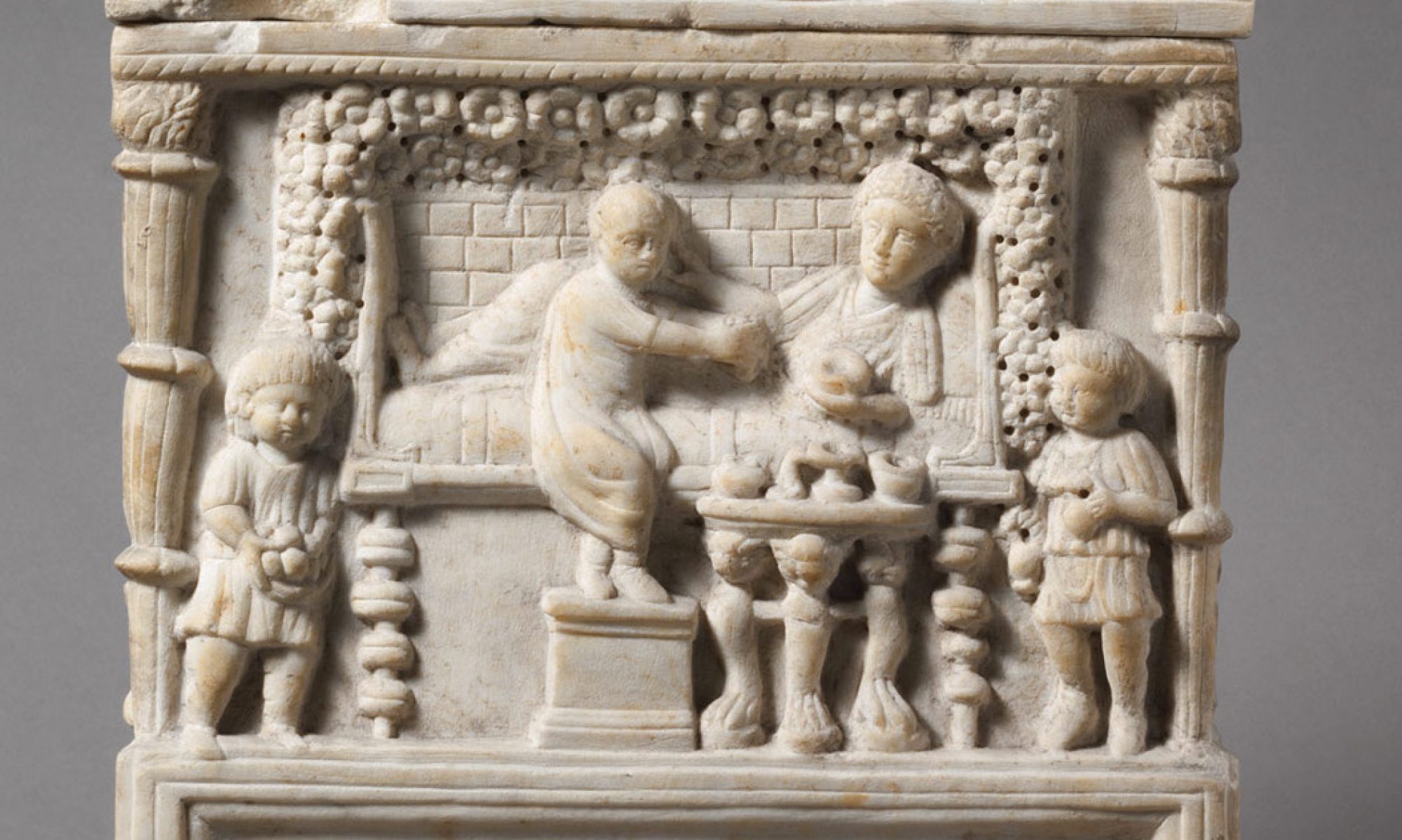Production as a word is a complex economic term denoting a process combining labor, capital, goods, and services in order to achieve the output of a good or service. For this project, my use of the term production refers both to influential socioeconomic factors and to the actual manufacture process, together combining the plans and ideas of artists or buyers, the labor of stoneworkers, obtaining marble, the sculpting itself, and then the output of a sculpted, sometimes inscribed marble cinerary urn as the good produced.
Mass-production or production to stock is a concept frequently associated with marble cineraria in scholarship, but there has been little research done into the nature of their production.
This project investigates and reconstructs the production of marble cinerary urns by tracking tool marks and traces of the different stages of sculpting. This project and the dissertation argue that marble cinerary urns were not mass produced in the sense described or suggested in current scholarship. It becomes evident after technical analysis of the different surfaces and patterns of sculpting on numerous marble cineraria that not all urns were commissioned, produced, or displayed in the same ways. However, from this study it also seems evident that the manufacturing processes used for the production of the earliest dated marble sarcophagi is closely linked with cineraria.
Read about manufacturing processes>>
The Harvard Art Museums classify this cinerarium as late antique through comparison of its marble with that used for small statues in Roman Alexandria. It is possible, however, that this urns shows the earliest stages of production. Similar examples can be found in Rome. For example, one undecorated urn now in the Museo Nazionale Centrale Montemartini in Rome was discovered with an additional metal alloy chest inside.
Although many marble urns show evidence of measured making, artistry and freehand sculpting certainly still occurred regularly. Take for example a small marble urn now at the Metropolitan Museum of Art in New York that was made to look like a tree trunk with vine leaves and grapes.
Considering the people who commissioned urns is especially useful for understanding patterns in sculptural production. The inscriptions on marble urns occasionally mention patrons explicitly or indicate certain social markers about the people who dedicated urns for friends, family, or other associates. Read about patrons >>
How production took place certainly differed in metropolitan Rome compared to provincial areas. Although focused on metropolitan production, this project also takes into account examples of urns found outside of the city proper.
One of the best known examples of an urn found outside of the city comes from Anagni and now resides in the Metropolitan Museum of Art in New York.

Discovered in 1899 at the Villa Magna southeast of Rome, this urn was excavated from a private tomb. Its finely executed sculpting indicates a custom commission. Certain technical details distinguish it from urns typical of metropolitan production. Its interior cavity lacks characteristic deep diagonal grooves cut from a driver that was used to remove marble. Its shape and measurements are standard and consistent with what probably were blocks prepared and squared at the quarries in Carrara, ancient Luna. The short feet are also of a standard size seen on most other chest-shaped urns.

It is possible this urn was made in Rome and then transported to the tomb where it was dedicated. We nonetheless must consider its production separate from metropolitan work.
